Posted by: Ken @ 4:35 pm
It is essential to my well-being for me to get out at least a couple of days a week. “Out” doesn’t mean our regular, and enjoyable, early morning “power walk.” No, I’m referring to what comes next when chores and other obligations do not interfere– a walk on the wild side. Here in South Florida we have several favorite places within walking distance or a few minutes’ drive. One particular morning last week (before my encounter with the Bobcat and 300,000 Tree Swallows), I got out quite early.
Around 2:00 AM on December 21, my sleep had been interrupted by a compulsion to photograph the partial lunar eclipse (hand-held image):
A little before my usual waking time, fumbling with the camera controls in the dark, I tried to capture the full eclipse . I should have used a tripod in the low light, but I think you get the idea:
The night before, I had stayed up late to watch the Bears destroy the Vikings, and woke up to a beautiful morning, groggy but still anxious to get “out.” Shortly after sunup, I walked a few doors down the street from our home to exit our gated community, and turned westward on an unpaved road.
On the berm that runs along the road, two immature White Ibises foraged in the early light: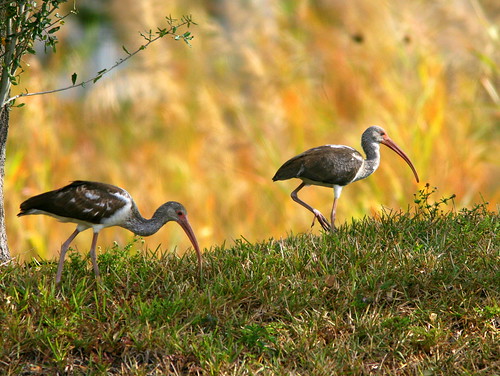
A slow ten-minute walk took me to a trail that leads south atop the levee along our birding patch of recovering Everglades. The noise of traffic and lawn mowers gradually faded, and I entered a new world, where faint sounds and tiny movements become important. Whether the call of a warbler, a rustle in the foliage, or the twitching of a doe’s ear, each demands my rapt attention.
The sun was still low and had just reached the hollow fractured top of a Royal Palm, where a little American Kestrel rested at the entrance of his winter lodging:
I peeked into a small opening in a nearby bush, to see a Northern Mockingbird that had probably spent the night on this perch. Secluded in the dark, the bird seemed very relaxed and did not fly when I approached quite close to take its picture. My flash lit up its little hiding hole.
The sharp focus on the bird’s eye was pleasant, so I saved an otherwise poor shot. I am pleased with the Better Beamer flash extender, as it seems not to cause eye shine at close distances:
As the sun reached down into the tops of the smaller trees, insects became more active, and so did their avian predators. A female American Redstart would not sit still for more than one or two seconds.
Most of attempts to capture a photo of this redstart displayed only empty branches:
A Blue-gray Gnatcatcher gleaned the foliage in the same tree:
A mustachioed male Northern (Yellow-shafted) Flicker perched briefly on a high branch:
Butterflies began moving as well. Among them, a Zebra heliconian, State Butterfly of Florida…
…and a tiny Cassius Blue:
With the onset of the winter dry season, water levels in the Everglades gradually recede. Only a month ago, the trail that crosses westward from the levee into the wetlands was underwater, but now I found it to be largely dry.
Looking west along SW 32nd St Trail (on the left) and Ditch:
From this vantage point, standing on a boulder, I often see Cottonmouths swimming along the ditch:
I was able to follow the trail a couple hundred yards before encountering mud and puddles. There were tracks of deer and raccoons, but no sign that anyone on foot or vehicle had used the two-track path. Invisible through the high grass, alligators splashed into the adjacent canal as I passed by. Two deer stared at me from far down the path, then melted into the grass. When I got closer I could hear them snorting or calling to each other, with what sounded like a coarsely whispered “How! How!” I assumed this helped them keep track of each other in the heavy cover.
Next to the wetlands trail, two unseen Carolina Wrens were singing a duet. The male started a very loud repetitive whistled “tweep-a-tweep-a-tweep-a-tweep-a-tweet” (There is great variety in their repertoire, from a three-syllable “teakettle-teakettle-teakettle…” to repetition of a single whistle that can sound almost like the hurried “cheer, cheer…” of an excited cardinal). It is amazing that such a tiny bird can make so much noise! At intervals, towards the end of his song, the female sometimes began a soft trill that continued after the male finished. I had to wait almost a half hour before they came into the open and sang in a small tree, about two feet apart. The high grass and foliage was so thick that I could not get a decent photo of both in the same frame.
Not one of more than a dozen photos provided an unobstructed view of the pair (male on left):
Here is my best shot of the male:
Emerging into the sunlight, the female Carolina Wren appears brighter in this image:
Starting to acknowledge the effects of a lack of sleep the previous night, I returned home earlier than usual. My rest was interrupted by an alarming e-mail from a local resident who said she feared that the nearby Bald Eagle nest, and maybe the tree that held it, had disappeared! The birds had begun incubating their first egg only about a week before. A cadre of volunteers keeps an eye on the eagles and communicate with one another on a Nest Watch Forum that I host on my web suite (subscribe if you wish to receive updates as they are posted).
The eagle nest has been quite hard to see this year, due to an overgrowth of exotic Melaleuca trees in front of it, and inexperienced onlookers (especially short people) really can have trouble seeing it. There had been some heavy winds with the recent cold fronts, and the nest tree is a shallow-rooted and brittle exotic Australian Pine, so I immediately followed up on her report. Upon arrival, I found that the tree was still upright, and one adult eagle was incubating peacefully, deep down in the nest cup.
Its mate then flew over the nest to chase away a Turkey Vulture that ventured too near, before settling to roost on a nearby snag:
Both members of the pair share incubation duties. Over the past three breeding seasons, the male has retained a few dark spots on his outer tail feathers, as shown in these photos from the Nest Watch Forum..
The second eagle had pure white tail feathers, indicating it was the female: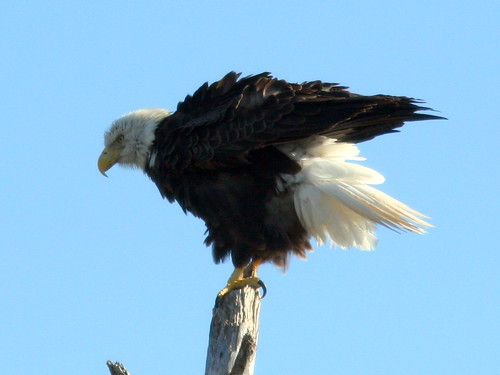
On direct comparison, the male is also noticeably smaller than the female. To my eye, the female appears fuller in the rear part of her abdomen than does her mate. Female Bald Eagles are said to have a longer talon on their back toes than the males, a feature not easy to judge in the field.
The base of her bill, from top to chin, is said to be proportionately larger than that of the male, but the difference is very subtle:













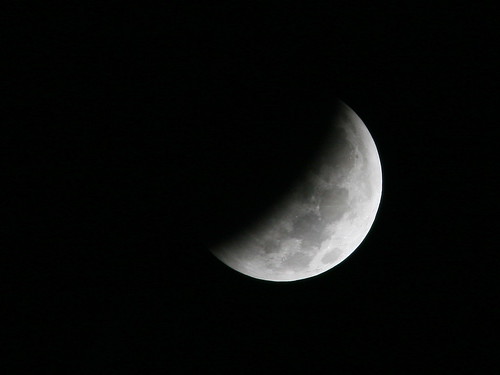
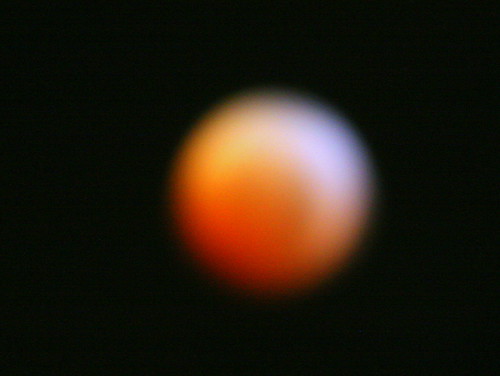
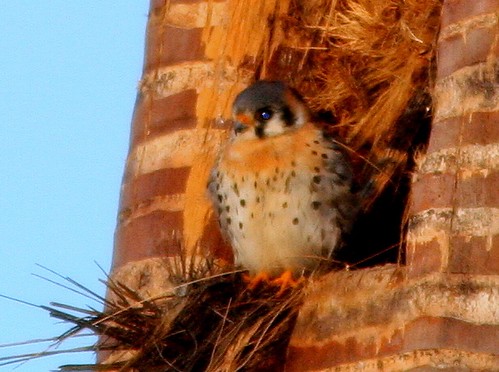

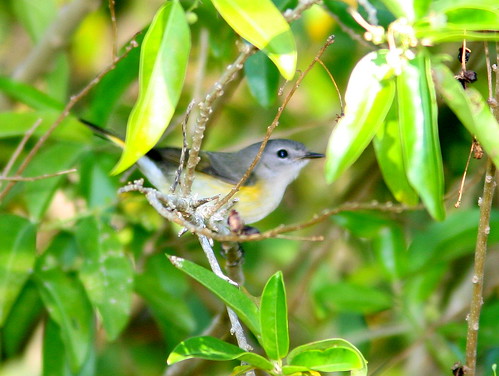
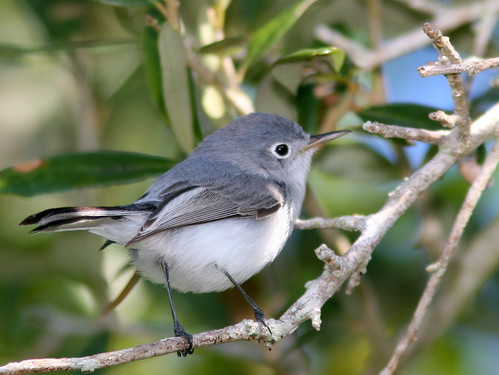

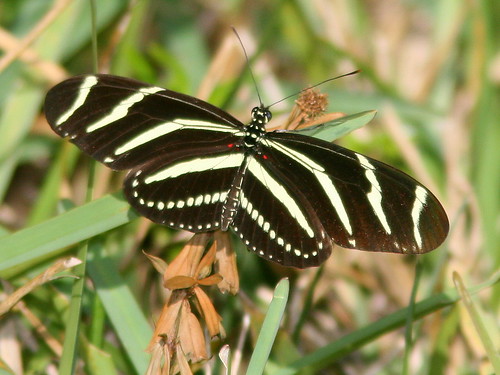
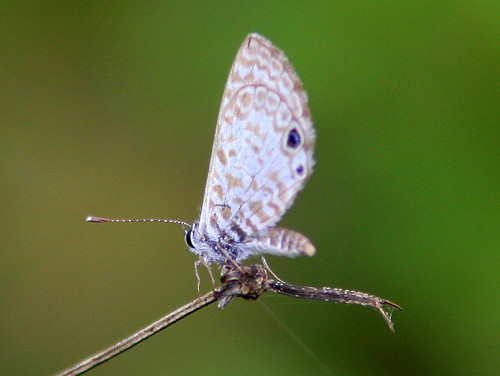
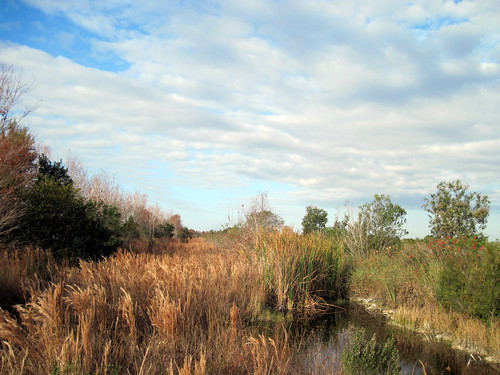
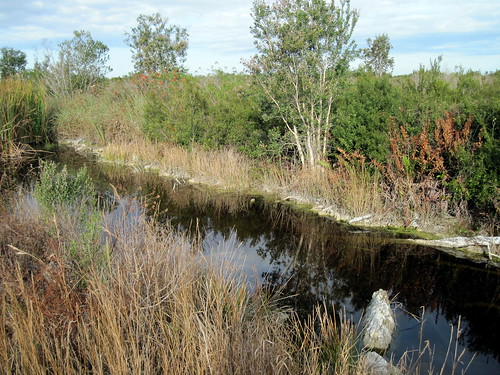
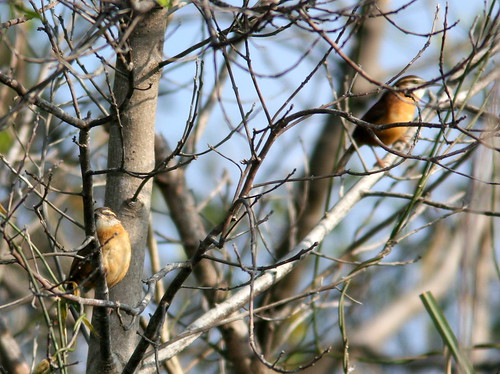
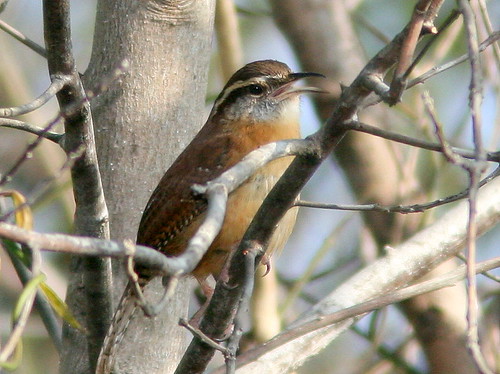


January 3rd, 2011 at 12:07 pm That must have been a wonderful time out! I love your “close-ups”, especially of course the eagles. wow!
January 4th, 2011 at 12:19 am Wow, looks like you had an outstanding day of birding. Great shots of the Carolina Wrens, as well as the gnatcatcher, flicker and all the others.